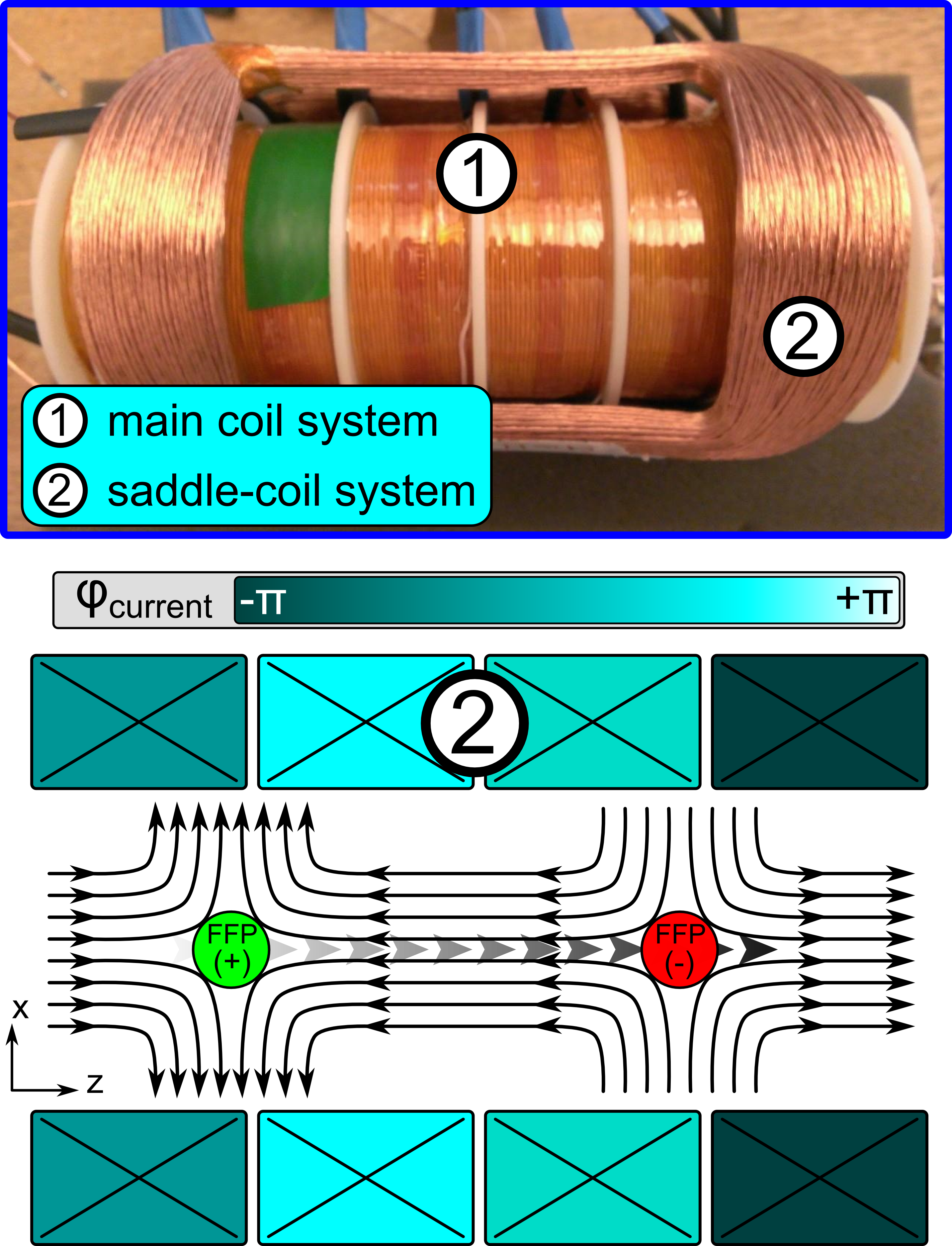µTWMPI - A setup for sub-millimeter resolution
- University of Würzburg, Experimental Physics V, Würzburg, Germany
Introduction
Since the first publication of Magnetic Particle Imaging (MPI) several different types of scanners have been presented [1]. Most of them were designated for pre-clinical applications resulting in low resolution of about 1 mm due to SAR and PNS limitations.
Increasing the resolution for MPI implies increasing the gradient strength, which is necessary for spatial encoding in MPI. The presented µTWMPI system is an optimized setup for high gradient strength and high resolution.
Methods
The µTWMPI system is a further development of the Traveling Wave MPI scanner [2]. For imaging a field-free point (FFP) with a strong gradient is generated by two coil pairs in Maxwell configuration, which can be driven individually. To reach higher gradient strength, the main coil system was optimized with respect to power consumption versus field strength. The inner bore size was decreased to 23 mm, which greatly increases the achievable gradient , and the saddle-coil pairs for moving the FFP through the sample were placed on the outside of the system. The usable field of view of the system is about 50 mm in length and 20 mm in diameter. Figure 1 (top) shows the current µTWMPI system consisting of the main coils and one of the saddle-coil pair. On the bottom of the figure the field configuration inside the scanner is shown schematically.

Results
In initial tests the optimized main field successfully achieved a gradient strength of about 9 T/m, which results in a resolution of about 500 µm [3]. In further steps the gradient strength is to be increased up to 30 T/m corresponding to a resolution of about 100 µm.
Discussion and Conclusion
The presented micro TWMPI scanner system is a promising approach for an ultra-high resolution MPI scanner. Compared to initial experiments using permanent magnets [4], the sample handling has been improved significantly. It offers a good-sized FOV and a resolution below 500 µm, which are good prerequisites for experiments in areas like biology, chemistry and material sciences [5].
Acknowledgements
This work was partially funded by the DFG (BE 5293/1-1).
- [1] N. Panagiotopoulos, et al., (2015), Magnetic particle imaging - Current developments and future directions
- [2] P. Vogel, et. al, (2013), Traveling Wave Magnetic Particle Imaging
- [3] P. Goodwill, et al., (2010), The X-space formulation of the magnetic particle imaging process: 1-D signal, resolution, bandwidth, SNR, SAR, and magnetostimulation
- [4] P. Vogel, et al., (2015), \mu MPI-Initial Experiments With an Ultrahigh Resolution MPI
- [5] P. Vogel, et al., (2014), Traveling Wave Magnetic Particle Imaging for determining the iron-distribution in rock
